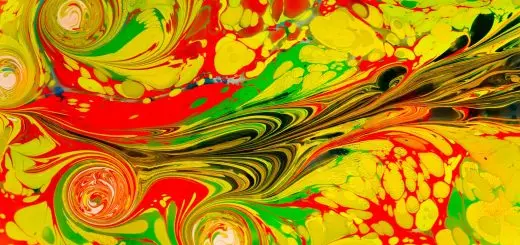The History Behind the Three Kings Holiday

Looking for more amazing products? Check out our online store and explore our collection here! Happy shopping!
Before diving in, please note: This post is for informational purposes only. If you’d like to know more about how we approach topics, feel free to check out our friendly Disclaimer Page.
Hey there, amazing readers! 
We’re committed to delivering quality posts, and your support (even just sticking around despite the ads) means everything to us. So, bear with us, and thanks for helping us keep the good vibes rolling. Now, on to the fun stuff!
TRANSLATE BUTTON AT THE END OF THE ARTICLE
A Quick Overview
Every January 6, people around the world gather to celebrate the Three Kings Holiday, also known as Epiphany.
This event marks the end of the Christmas season, and it celebrates a significant moment in Christian tradition—the visit of the Magi to the newborn Jesus.
But the holiday is much more than a biblical event; it’s a vibrant tapestry of cultural customs, delicious food, and family gatherings.
Let’s dive deeper into the fascinating history and traditions that make the Three Kings Holiday a cherished occasion for so many.
Unwrapping the Origins of the Three Kings Holiday
The Three Kings Holiday, or Epiphany, has roots that intertwine with both Christian and pre-Christian traditions.
It commemorates the visit of the Magi to the Christ child.
In many cultures, this celebration symbolizes the revelation of Christ to the Gentiles.
The origins of this holiday trace back to the early Christian community.
The word "epiphany" comes from the Greek "epiphaneia," meaning manifestation or appearance.
This holiday first appeared in the Eastern Orthodox Church in the 4th century.
It was observed primarily to celebrate the baptism of Jesus in the Jordan River, but over time, Western Christianity adopted the specific focus on the Magi.
In various European traditions, especially in Spain and Latin America, the Three Kings Holiday has evolved into a time of joy and celebration.
It also serves as a reminder of the importance of community and sharing.
As a result, many customs and traditions surrounding this holiday have developed organically over the centuries, blending local practices with the core religious narratives.
The legends surrounding the three kings—often identified as Melchior, Caspar, and Balthazar—have also contributed to the holiday’s rich tapestry.
These figures represent the various races and origins of the world’s people, symbolizing unity in diversity.
The Magi: Who Were the Three Kings?
The identity of the Three Kings, or Magi, has intrigued scholars and theologians for centuries.
In the biblical text of Matthew 2:1-12, the Magi are described as "wise men from the East." Their journey, guided by the star, led them to Bethlehem, where they paid homage to Jesus.
Traditionally, Melchior is depicted as a Persian king, Caspar as an Indian king, and Balthazar as a Babylonian king.
Each king is often associated with particular gifts they presented to Jesus: gold, frankincense, and myrrh.
Gold symbolizes Jesus’ royal status.
Frankincense, an aromatic resin, signifies his divinity.
Myrrh, often used in burials, foreshadows his death.
The Magi’s story is not just about the gifts; it represents the acknowledgment of Jesus as the Messiah by various nations.
This act of homage reflects the universality of Christ’s message.
Furthermore, various cultures have created their interpretations of the Magi.
In some Hispanic traditions, children dress up as the kings during celebrations, embracing the spirit of giving, while in others, their wisdom and journey are central themes during educational performances.
The Journey of the Wise Men: A Biblical Tale
The journey of the Magi is as compelling as it is significant.
According to the biblical account, these wise men traveled from the East, a journey that likely spanned several months and covered vast distances.
Imagine the excitement and anticipation as they followed the star, believing it would lead them to a great king!
Legend has it that the Magi consulted ancient prophecies, and their knowledge of the heavens guided them.
Their journey symbolizes the pursuit of truth and enlightenment—a universal quest that resonates with all of us, regardless of faith.
Picture the scene: camels laden with gifts, the vast desert stretching for miles, and the star shining brightly above.
It’s a beautiful image that evokes a sense of wonder.
When they finally arrived in Bethlehem, they found Jesus in a humble setting, surrounded by his mother, Mary, and Joseph.
The contrast of their regal gifts and the modest environment underscores a profound message about humility and grace.
The Magi’s encounter with King Herod adds another layer to the tale.
Herod, feeling threatened by the prophecy of a new king, sought to deceive the Magi into revealing the child’s location.
However, warned in a dream, the wise men returned home by another route, ensuring Jesus’ safety.
Their journey was not just physical; it was a spiritual pilgrimage that emphasized the importance of wisdom and discernment in our own lives.
Celebrating Epiphany: The Significance of January 6
January 6 marks the culmination of the Christmas season in many cultures.
It’s a day filled with festivities, family gatherings, and, of course, reflections on the Magi’s visit.
For many Christians, it’s a time to celebrate the revelation of Christ to the world.
In Western Christianity, Epiphany is significant as it highlights the manifestation of Christ’s divinity.
It marks the moment when Jesus was first recognized by the Gentiles, represented by the Magi.
Traditionally, many churches hold special services or blessings to commemorate the day.
In some areas, priests bless water, symbolizing Christ’s baptism, and congregations may partake in special prayers and community gatherings.
Culturally, this day signifies a chance to bring families together.
In my own experience, we often celebrate with delicious food, music, and games.
The festive atmosphere creates an opportunity to reflect on the spiritual lessons of the holiday while enjoying each other’s company.
Moreover, the significance of January 6 extends beyond religious observance.
It has also become a time for charitable acts, encouraging communities to share their blessings with those less fortunate.
This spirit of giving reflects the Magi’s original gifts of gold, frankincense, and myrrh, inspiring us to be generous in our daily lives.
Traditional Festivities Around the World for Three Kings
The Three Kings Holiday is celebrated in myriad ways across the globe, each culture adding its twist.
In Spain, for instance, the arrival of the Three Kings is marked with a grand parade featuring colorful floats, music, and dancers.
It’s a spectacle that draws crowds and creates a jubilant atmosphere.
In Mexico, the celebration is equally grand.
Families gather for "El Día de Reyes," where children eagerly await gifts, believing they receive them from the Kings rather than Santa Claus.
The highlight is often a large gathering with a special cake known as "Rosca de Reyes."
In France, a buttery pastry called "Galette des Rois" is enjoyed.
It contains a hidden figurine, and the person who finds it is crowned king or queen for the day.
In Puerto Rico, children leave grass or hay under their beds for the kings’ camels and receive gifts in return.
In Italy, the celebration continues with La Befana, a witch who brings gifts to children on the eve of Epiphany.
These traditions contribute to a festive spirit, emphasizing community and togetherness.
Regardless of the specific customs, the common theme of honoring the Magi’s journey and gifts unites people worldwide.
It’s a joyous occasion, and I often feel that sense of unity when sharing stories from different cultures.
Sweet Treats: The Rosca de Reyes Explained
One of the most delightful aspects of the Three Kings Holiday is the delectable treat enjoyed by many: the Rosca de Reyes.
This sweet bread, shaped in a circle to represent a king’s crown, is a staple in many Hispanic cultures during the celebration.
Traditionally, the bread is adorned with dried fruits to symbolize the jewels in the crowns of the Three Kings.
It’s not just a treat for the taste buds; it carries a rich meaning.
Hidden inside the bread is a figurine of a baby Jesus and sometimes a dried bean.
The person who finds the figurine is expected to host a gathering on Candlemas Day (February 2), while the one who finds the bean must provide the bread next year.
Baking the Rosca is often a family affair.
I remember gathering with my family in the kitchen, flour dusting our faces as we shaped the dough.
The laughter, stories, and traditions shared while preparing this special dish create lasting memories.
In Spain, the Rosca is similar but may have slight variations in flavor and decoration, showcasing regional differences.
No matter where you are, enjoying a slice of this cake brings people together, fostering a sense of community and celebration.
Unique Customs: How Cultures Celebrate the Kings
As we explore the customs surrounding the Three Kings Holiday, it’s fascinating to see how different cultures celebrate in unique ways.
Each tradition reflects its history and values, adding depth to the holiday’s meaning.
In some Latin American countries, children dress as the Magi during parades, embodying the spirit of giving and joy.
In France, the Galette des Rois is not only a delicious treat but also sparks friendly competition among family members.
In many places, the night before Epiphany is filled with excitement as children prepare to receive their gifts.
In the Dominican Republic, it’s common for families to celebrate with fireworks and music, creating an atmosphere of festivity and unity.
One unique aspect I’ve found is in the Netherlands, where the holiday is known as "Driekoningen." Children go door to door singing songs, much like carolers, sharing the message of the holiday and receiving treats in return.
This sense of community service connects the holiday to local culture and strengthens neighborhood bonds.
The variations are endless: in some cultures, people participate in community reenactments of the Magi’s journey, while others focus on charitable acts.
These customs enrich the holiday, demonstrating how a single event can inspire different expressions of love, generosity, and joy.
The Role of Gifts: Inspiration from the Magi
When we think of the Three Kings Holiday, the theme of gift-giving stands out.
Inspired by the Magi’s offerings to Jesus, many people exchange gifts during this time.
It’s a beautiful way to honor the spirit of generosity.
In various cultures, the gifts can range from small tokens of appreciation to grand gestures.
In some Hispanic countries, children eagerly await presents on Epiphany, creating a sense of excitement that rivals Christmas morning.
The gifts exchanged often hold personal significance.
For instance, handmade gifts or items with heartfelt messages reflect the true essence of giving.
I recall crafting a simple but meaningful gift for a friend, which made the exchange all the more special.
It’s the thought behind the gift that truly matters.
The focus on gift-giving also extends to charity, with many families choosing to donate to those in need during this time.
This practice reinforces the message of the Magi’s gifts, reminding us that sharing our blessings is central to the holiday’s spirit.
Moreover, certain traditions involve a “Secret Kings” game, similar to Secret Santa, where participants draw names and give gifts anonymously.
This playful twist adds a layer of fun and excitement to the celebration.
Family Gatherings: Bringing Loved Ones Together
At its core, the Three Kings Holiday is about family and togetherness.
It’s a chance for loved ones to gather, share meals, and create lasting memories.
As the festivities unfold, the laughter and joy resonate in the air.
Many families prepare special meals that reflect cultural traditions, turning the holiday into a feast.
From tamales in Mexico to hearty roasts in Spain, the food often takes center stage.
In my family, we set aside time to share stories and reflect on what the holiday means to us.
It’s an opportunity to connect, and I cherish those moments of deep conversation and shared laughter.
There’s something magical about gathering around the table, feeling the warmth of family bonds.
In some cultures, the holiday includes games and activities that engage everyone, from the youngest to the eldest.
Whether it’s an outdoor celebration or an indoor gathering, the emphasis is on fun and unity.
This time of year reminds us to prioritize our relationships and celebrate the people who matter most.
It’s a beautiful way to honor the spirit of the Three Kings, who traveled great distances to honor a newborn king.
The Influence of Three Kings on Modern Holiday Traditions
The Three Kings Holiday has significantly influenced modern holiday traditions across various cultures.
While Christmas remains a central theme for many, the celebration of Epiphany serves as a beautiful reminder of the spirit of giving and community.
In some places, the blending of traditions has created new customs.
For example, the idea of leaving out cookies and milk for Santa has morphed into leaving grass or hay for the Magi’s camels.
It’s fascinating to see how traditions can evolve while still honoring their roots.
The influence of the Three Kings can also be seen in contemporary holiday celebrations, where charitable gestures and community service have become common practices.
Many people use this time to volunteer, donate, or support local causes, reinforcing the holiday’s message of love and giving.
Additionally, public events, parades, and community festivals celebrating the Three Kings have gained popularity, encouraging people to come together and share in the joy.
These gatherings create a sense of camaraderie, reminding us that the essence of the holiday transcends individual beliefs.
As families blend their traditions, we see a richer, more vibrant celebration that reflects the diversity of our communities.
Whether through food, music, or shared experiences, the influence of the Three Kings Holiday continues to thrive.
A Cheerful Reflection: What This Holiday Teaches Us
The Three Kings Holiday teaches us valuable lessons about generosity, unity, and the joy of giving.
As we gather with loved ones and reflect on the Magi’s journey, we are reminded of the importance of kindness and compassion in our daily lives.
This holiday encourages us to look beyond ourselves and consider how we can contribute to our communities.
The Magi’s gifts symbolize the beauty of sharing what we have with others, whether through tangible offerings or heartfelt gestures.
Moreover, the celebration reinforces the idea that diversity enriches our lives.
The Magi, representing different nations and backgrounds, remind us that we are all part of a larger human family, united in our pursuit of love and understanding.
In moments of reflection, we can also think about the significance of humility.
The Magi traveled far, not in search of wealth or power but to honor a humble child.
This teaches us that true greatness lies not in status but in our capacity to love and serve others.
As we celebrate, let’s carry these lessons into our lives throughout the year.
The spirit of the Three Kings can inspire us to be more compassionate, more giving, and more connected to those around us.
Embracing the Spirit: Celebrating Three Kings Today
Today, the Three Kings Holiday continues to thrive, embracing both tradition and modernity.
As we celebrate, we have the opportunity to pass down customs to future generations, keeping the spirit alive.
Whether through festive meals, gift exchanges, or community service, we can embody the essence of the holiday in our own unique ways.
In my experience, blending traditional practices with personal touches makes the celebration even more special.
As we gather with friends and family, let’s remember the lessons of the Magi: the joy of giving, the importance of community, and the beauty of diversity.
Each gathering is a chance to create new memories while honoring those who came before us.
So, this January 6, let’s raise our voices in celebration, share delicious food, and cherish our loved ones.
Let’s celebrate not just the arrival of the Magi but the values they represent.
Who knows, maybe we’ll discover our own paths of wisdom along the way.
Conclusion
The history behind the Three Kings Holiday is rich and multifaceted, weaving together threads of faith, culture, and community.
From the journey of the Magi to the joyous celebrations worldwide, this holiday encapsulates what it means to give, share, and come together as a family.
So as January 6 approaches, let’s honor the spirit of the Three Kings with open hearts, ready to embrace the joy of the season.

The Enlightenment Journey is a remarkable collection of writings authored by a distinguished group of experts in the fields of spirituality, new age, and esoteric knowledge.
This anthology features a diverse assembly of well-experienced authors who bring their profound insights and credible perspectives to the forefront.
Each contributor possesses a wealth of knowledge and wisdom, making them authorities in their respective domains.
Together, they offer readers a transformative journey into the realms of spiritual growth, self-discovery, and esoteric enlightenment.
The Enlightenment Journey is a testament to the collective expertise of these luminaries, providing readers with a rich tapestry of ideas and information to illuminate their spiritual path.
Our Diverse Expertise
While our primary focus is on spirituality and esotericism, we are equally passionate about exploring a wide range of other topics and niches 

To ensure we provide the most accurate and valuable insights, we collaborate with trusted experts in their respective domains 
Our blog originally focused on spirituality and metaphysics, but we’ve since expanded to cover a wide range of niches. Don’t worry—we continue to publish a lot of articles on spirituality! Frequently visit our blog to explore our diverse content and stay tuned for more insightful reads.
Hey there, amazing reader! 
Check out our store here and take a peek at some of our featured products below! Thanks for being awesome!











